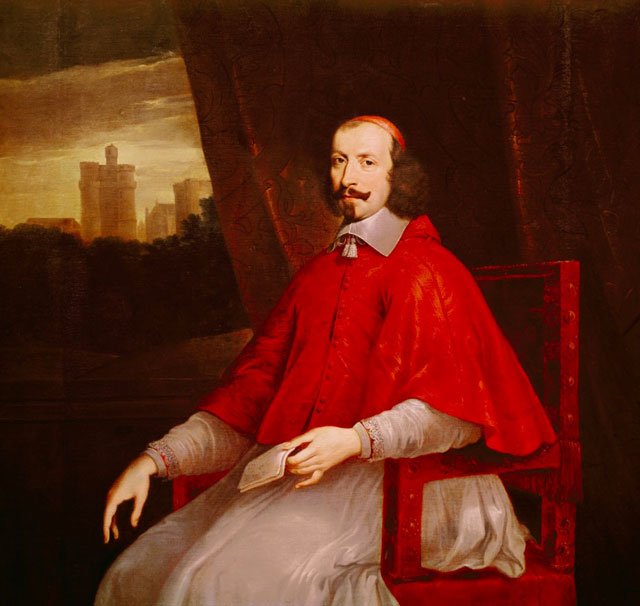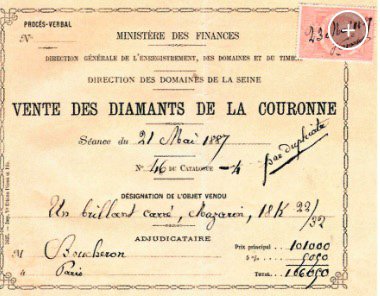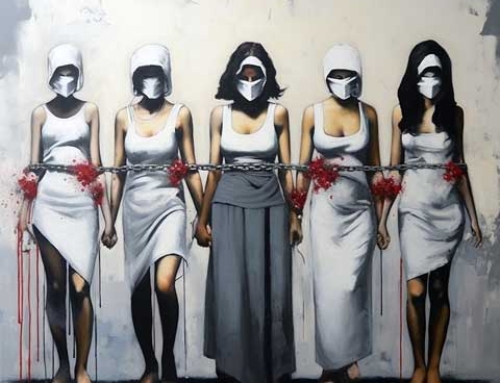On 14 November in Geneva, one of France’s most storied gems comes to auction at Christie’s. Here we look back on the singular history of the Grand Mazarin, a diamond with three centuries of royal provenance.
The diamond known as the Grand Mazarin originated in the Golconda mines, on India’s Deccan plateau. The Golconda mines are legendary for having produced some of the most important diamonds in history — among them the Koh-i-Noor, the Regent Diamond and the Wittelsbach-Graff, all famous for their exceptional clarity.

Philippe de Champaigne (1602-1674), The Mazarin Cardinal. Musée Condé, Chantilly, France / Bridgeman Images
The Grand Mazarin, which will be offered on 14 November in the Magnificent Jewels sale at Christie’s in Geneva, takes its name from Cardinal Mazarin, who became France’s Chief Minister in 1642. Toward the end of his life, Mazarin assembled a collection of 18 exceptional gems. Purchased from the royal families of Europe or sourced from the jeweller Lescot, they were the most beautiful jewels on the Continent.

The Grand Mazarin, an historic coloured diamond. The old mine brilliant-cut diamond, weighing approximately 19.07 carats. Estimate on request. This lot is offered on 14 November in Magnificent Jewels at Christie’s in Geneva
The Grand Mazarin, an historic coloured diamond. The old mine brilliant-cut diamond, weighing approximately 19.07 carats. Estimate on request. This lot is offered on 14 November in Magnificent Jewels at Christie’s in Geneva
Of the 18, eight were ‘square cut’ diamonds; the largest of these was known as the Grand Mazarin. These stones became part of the French crown jewels and would remain the favourites of the French royal family for more than 200 years, having first passed from Mazarin to King Louis XIV — The Sun King — in 1661, when the French ruler was only 23 years old.
Louis’ wife, Maria Theresa of Austria, is likely to have been the first person to wear the Grand Mazarin. After Maria Theresa’s death, Louis XIV added the Grand Mazarin to his chain of diamonds, set in descending size order, on which it remained for many years.
The Sun King’s 72-year reign would leave its indelible mark on French history — the Château of Versailles, the construction of which he supervised, has left to posterity the image of a king enamoured of grandeur.
In 1792, the French Revolution had been underway for three years. Severely weakened, King Louis XVI was forced to hand over all the property of the French crown, now stored in the Garde-Meuble, or royal treasury.
The publication a year earlier of a complete inventory of the French crown jewels convinced a group of around 30 men to attempt to pull off the crime of the century. After breaking into the Garde-Meuble — a building that can still be seen on the Place de la Concorde in Paris — the robbers pried open the cabinets and seized all of the French crown jewels. Together with all the finest diamonds in France, the Grand Mazarin simply disappeared.
Ill-prepared from the start, most of the thieves were eventually caught and sentenced to death. One of them begged to be spared the scaffold in return for surrendering his portion of the spoils — which included the Grand Mazarin — to the authorities. It was a lucky break. Other stones were never found.
The fall of the monarchy called the fate of the crown jewels into question, but the rise of Emperor Napoleon brought a new fashion for celebrating the splendours of the past. In 1810, the Emperor commanded jeweller François-Regnault Nitot to create a magnificent set of diamond jewellery for his wife, Marie-Louise. It included a crown, a diadem, a necklace, a comb, a pair of three-drop earrings, bracelets, a belt, 10 dress jewels and eight rows of gold collets. The diadem was set with the most beautiful of the crown diamonds, the Grand Mazarin among them. But the Emperor’s reign was short: on the ascension of King Louis XVIII to the throne in 1814, the stone was removed and returned to the crown.
Some 70 years later, a plan to sell the French crown jewels was put in motion not long after their appearance, in 1884, in an exhibition at the Louvre. Despite heated opposition, an auction was held in May 1887. The Grand Mazarin was purchased by Frédéric Boucheron, one of the favoured jewellers of France’s great families.

Invoice in the name of Boucheron for the Grand Mazarin diamond, lot 46 of the 1887 auction of the French crown jewels © Boucheron archives
Many decades later, in 1962, the Louvre held an exhaustive, meticulously researched exhibition showcasing the most important jewels ever produced in France, with a special place reserved for the French crown jewels. The Grand Mazarin was listed as number 22, between the legendary Regent and Sancy diamonds. This would be the last time it was ever exhibited in public. The stone was subsequently sold to the European private collection from which it comes to auction at Christie’s.






